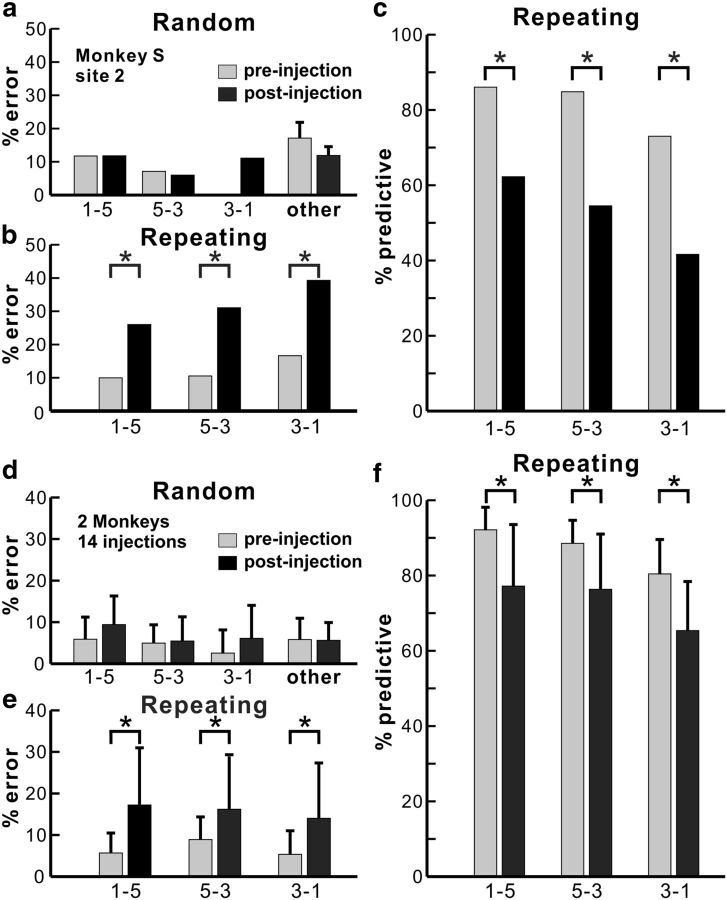Figure 4.
Effects of PMd inactivation. a–c, The performance data for an injection at site 2 in monkey S (Fig. 1h). a, Error rate in the Random task. PMd inactivation did not have any effect on number of errors (χ2 test, p = 0.992 for move 1-5, p = 1.000 for move 5-3, p = 1.000 for move 3-1, df = 1; others, t test, p = 0.415). b, Error rate in the Repeating task. After the muscimol injection, the number of errors increased dramatically with all movements in the Repeating task (χ2 test, p < 0.001 for all moves, df = 1). c, Predictive responses. The percentage of predictive responses decreased significantly after the muscimol injection (χ2 test, p = 0.006 for move 1-5, p < 0.001 for move 5-3, p = 0.014 for move 3-1, df = 1). d–f, Population data for 14 effective injections at 13 cortical sites. d, Average error rate in the Random task. PMd inactivation did not have an effect on the number of error responses in the Random task (paired t test with 14 injection experiments, p = 0.260 for move 1-5, p = 1.000 for move 5-3, p = 0.273 for move 3-1, p = 0.753 for others, df = 13). e, Average error rate in the Repeating task. The error rate in the Repeating task increased significantly after the PMd inactivation (paired t test, p = 0.015 for move 1-5, p = 0.03 for move 5-3, p = 0.014 for move 3-1, df = 13). f, Average predictive responses. The percentage of predictive responses decreased after localized inactivation of the PMd (paired t test, p = 0.004 for move 1-5, p = 0.004 for move 5-3, p < 0.001 for move 3-1, df = 13). Other, Movements that were not a part of the Repeating sequence (5-3, 3-1, or 1-5). *p < 0.05.

